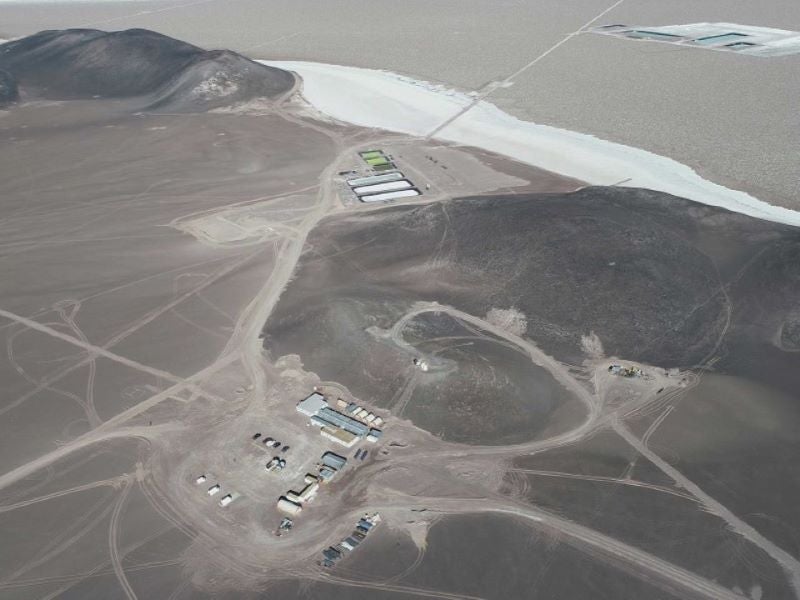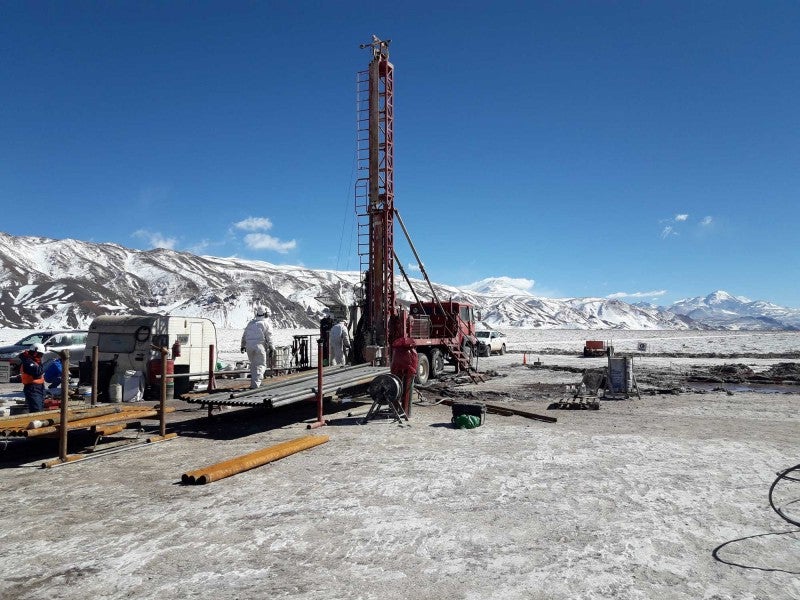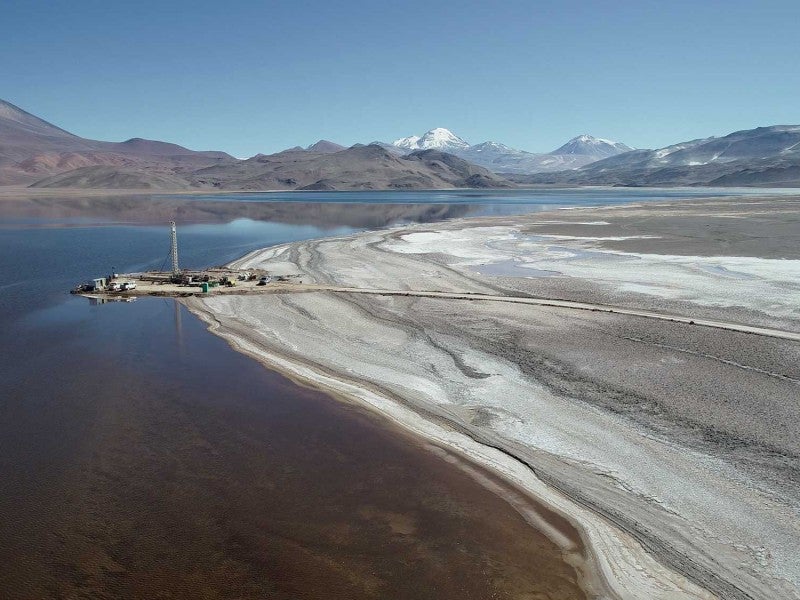The Tres Quebradas (3Q) project is a newly discovered lithium salar and brine reservoir complex in Catamarca Province, the biggest lithium producer in Argentina.
The project is found to be a unique high-grade lithium brine reservoir located in the famous Lithium Triangle, which corners with Chile, Argentina and Bolivia, and holds many of the world’s biggest brine lithium mines and projects in the Puna Plateau.
It was previously developed by Canadian company Neo Lithium. Zijin Mining Group (Zijin), an exploration and mining business based in China, signed an agreement to buy Neo Lithium for a consideration of $770m in October 2021. The acquisition was completed in January 2022.
The 3Q project received approval from Catamarca’s mining and environmental authorities for its environmental report and work programme in October 2016, allowing the company to quickly move forward to the exploration phase.
A feasibility study (FS) for the project was completed in October 2021, which estimated a pre-production capital cost of $370.5m and a life of mine (LOM) of 50 years.
The project is estimated to produce 20,000t of lithium carbonate equivalent (LCE) annually during the first 20 years of operation. It has potential for further expansion in recovery as the existing LOM reserve estimate is only 31% of the entire resource. The environmental impact assessment (EIA) for the construction and operation of the 3Q project was approved by the Environmental and Mining Authority in January 2022.
Tres Quebradas (3Q) project location
The lithium brine project is located in the south-western zone of the Catamarca province, the oldest lithium producing province in Argentina. It encompasses tenements covering an area of approximately 35,362.06ha.
Geology and mineralisation
The 3Q project is located in the Lithium Traingle, which comprises high-altitude salt lakes and salt flats, many of which contain high levels of lithium concentrations. Located in the southern part of the triangle, the project coincides with the Pedernales and Maricunga salars in Chile and hence is estimated to contain lithium brine accumulations.
Reserves
The proven and probable mineral reserves of the 3Q project were estimated at 1.67Mt (million tonnes) of LCE, as of October 2021.
Mining and recovery methods at Tres Quebradas project
The 3Q project will feature a series of 15 brine production wellfields over its 50 years of the project life.
The project will have production installations on two sites, which will be located 160km apart. Installations such as brine wells, evaporation ponds, and crystallisation plant will be on the Tres Quebradas Salar, while the remaining facilities will be located on a site near the town of Fiambala.
Brine extracted from the production wells will be pumped to two pre-mixing ponds where brine from different wells will be mixed together and fed as a homogenous brine solution to the evaporation ponds. Brine from the pre-mixing ponds will feed the pre-concentration ponds comprising two strings operating in parallel.
Each string will be divided into two larger evaporation ponds from where salts will be harvested at regular intervals and stockpiled in designated areas.
The brine from the salar site will be transported by trucks to the lithium carbonate plant site at Fiambala and unloaded to two reception ponds. The ponds will feed the first stage of the lithium carbonate plant.
The brine will be introduced into a solvent extraction (SX) circuit to remove boron. The boron-free brine will then be fed to the calcium and magnesium precipitation stages where calcium and magnesium are removed from the brine.
The resulting concentrated lithium brine will be sent to the lithium carbonate precipitation stage where the brine will be heated to 70℃ to facilitate precipitation of lithium carbonates.
The brine with the precipitated lithium carbonate will be fed to a hydro cyclone battery to reduce its water content. The solution will then be introduced to peeler centrifuges to generate lithium carbonate with 15% moisture content.
The lithium carbonate content will be fed to a rotary dryer to produce a final lithium carbonate product with 0.3% moisture content.
Tres Quebrads lithium project infrastructure
The project currently features minimal infrastructure including the RN60 national highway, through which the project can be accessed.
The power required for the project will be supplied through a combination of thermal and solar generation plants that will be constructed in the salt flat. The solar plant is expected to have a capacity of 4MW, while the thermal power plant will be LNG fuelled for use at nights or when solar power is unavailable.
Water sources will be explored in the adjacent large alluvial fans. Mining personnel will be sourced from the nearby Fiambala town.
The storing equipment for tailings and waste material will be minimal and will be arranged as part of the infrastructure development at the site.
Neo Lithium has awarded road, camp and pilot pond construction contracts as well as geophysics and drilling contracts, following the recent approval from the environmental and mining authorities.
Works on the 60km road upgrade from the highway for a weather-proof road are underway. A camp facility for 40 personnel, which was pre-built off-site, will be transported to the site. Also installed at the site will be a weather station and a full-scale laboratory.
Contractors involved
Worley Chile and Worley Argentina, subsidiaries of Australia-based engineering services firm Worley, were selected to complete a definitive feasibility study for the project in January 2021. Groundwater Insight provided the resource and reserve estimate for the FS.
Hidroar, an Argentine company, conducted the initial geological mapping of the project area.
Aqua Insight provided FEFLOW resource modelling for the mineral resource estimate for the project.
Benchmark Mineral Intelligence (BMI) was engaged to complete a comprehensive analysis of the lithium market in August 2021.
GT Ingenieria, and Servicios Integrales Mineros Catamarca (Semicat) were engaged to undertake the environmental studies for the lithium project.
GHD Chile, and Groundwater Insight Canada prepared the pre-feasibility study (PFS) for the project in 2019.
B&B International Trade prepared the logistic and supply study for the processing sites, as part of the PFS. Serman & Asociados, an engineering consultancy, was engaged to conduct a power supply survey. It was also contracted to undertake a technical study for the access road.
KBR received a contract to provide evaporation and crystallisation technology solutions for the project in July 2021.






